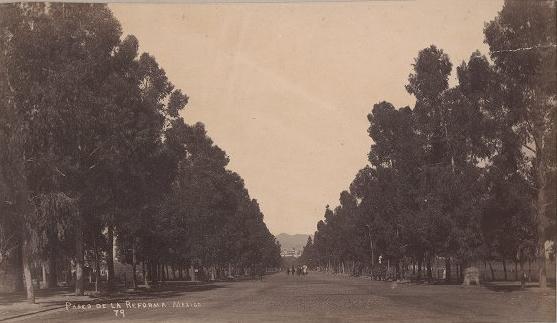| << Chapter < Page | Chapter >> Page > |
While students are looking at the picture, some questions teachers could ask to prompt discussion include:
Paseo de la reforma

After having them discuss amongst themselves in pairs, groups, or as a class, the teacher can point out the different parts of the picture, its history, and cultural significance. The picture above was most likely taken shortly after the completion of the Paseo de la Reforma in 1879, which was created so that Emperor Maximilian I could be connected from his residence in the Chapultepec Castle (which can be seen at the far end of the Reforma) to the National Palace. The teacher can then describe Mexico City’s different historical landmarks (and then move on to other parts of Mexico afterwards). It can also be noted that there are some men on horse riding on Reforma headed towards the National Palace, who could be palace guards or civilians.
Some questions that can be beneficial to pose while looking at the pictures include:
Using different pictures can introduce the multiple Spanish cultures. For example, the image of the Fabricantes de mecate shows Mixtecas from Oaxaca, Mexico working in the rope manufacturing business. In the photo, there are 2 men, who are braiding the strings to make a stronger rope, a woman, who is making tortilla-like food, and a child. While pointing out the different elements of living from the picture, you could then transition into talking about rural life in other countries (like Argentina and its gauchos) or how different parts of South America have their own specialties (like Columbia and its coffee beans).

Notification Switch
Would you like to follow the 'Using historical documents' conversation and receive update notifications?